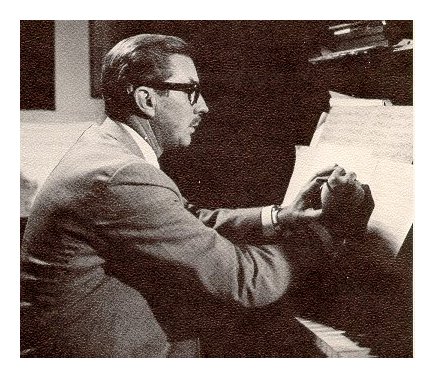
John Cunniff. (July 11, 2015). NYC Downtown and Brooklyn Bridge Panorama. Flickr. Retrieved from https://www.flickr.com/photos/johncunniff/19610363205/sizes/l/

The United States of America comprises mainly the North American continent between Canada and Mexico. Alaska, to the north-west of Canada, and Hawaii, in the central Pacific Ocean, are two of the 50 states of the USA. There is considerable climatic variation, with mean annual average temperatures ranging from 29°C (84°F) in Florida to −13.3°C (10°F) in Alaska. Average annual rainfall ranges from 1,831 mm (72.1 ins) in Arkansas to 191 mm (7.5 ins) in Nevada. Much of Texas, New Mexico, Arizona, Nevada and Utah is desert. The most widely spoken language and unofficial national language is English, and there are significant and growing Spanish-speaking minorities. Christianity is the predominant religion. The national flag (proportions 10 by 19) has 13 alternating stripes (seven red and six white) with a dark blue rectangular canton, containing 50 white, five-pointed stars, in the upper hoist. The capital is Washington, DC.
Citations:
Country Flag (The United States of America), in Europa World online. London, Routledge. University of Tennessee, Knoxville. Retrieved 20 April 2018 from http://www.europaworld.com/entry/us.FLAG
Location, Climate, Language, Religion, Flag, Capital (The United States of America), in Europa World online. London, Routledge. University of Tennessee, Knoxville. Retrieved 20 April 2018 from http://www.europaworld.com/entry/us.is.2

Country Map (The United States of America), in Europa World online. London, Routledge. University of Tennessee, Knoxville. Retrieved 20 April 2018 from http://www.europaworld.com/entry/us.MAP

Grand canyon [Online image]. (2018). In World Book Advanced. Retrieved from https://www.worldbookonline.com/advanced/article?id=ar503245#tab=homepage

Upper and Lower Yosemite Falls [Online image]. (2019). In World Book Advanced. Retrieved from
https://www.worldbookonline.com/advanced/media?id=pc011229

Cherokee dancers [Online image]. (2018). In World Book Advanced. Retrieved from https://www.worldbookonline.com/advanced/media?id=pc334078

Badlands [Online image]. (2018). In World Book Advanced. Retrieved from https://www.worldbookonline.com/advanced/article?id=ar041660

Jazz band in Preservation Hall in New Orleans [Online image]. (2018). In World Book Advanced. Retrieved from https://www.worldbookonline.com/advanced/article?id=ar388920

Amish carriage [Online image]. (2018). In World Book Advanced. Retrieved from https://www.worldbookonline.com/advanced/article?id=ar018740.

United States Capitol [Online image]. (2018). In World Book Advanced. Retrieved from https://www.worldbookonline.com/advanced/article?id=ar093610.

Golden Gate Bridge [Online images]. (2018). In World Book Advanced. Retrieved from https://www.worldbookonline.com/advanced/article?id=ar228320

United States' pacific coast [Online image]. (2018). In World Book Advanced. Retrieved from https://www.worldbookonline.com/advanced/article?id=ar409860

Hollywood sign in the hills above Los Angeles [Online image]. (2018). In World Book Advanced. Retrieved from https://www.worldbookonline.com/advanced/article?id=ar259500

Thomas Cole, American; 1801-1848 North and Central America, North America, United Sta. New England Scenery. 1839. The Art Institute of Chicago, Mr. and Mrs. Samuel M. Nickerson Collection, Chicago, Illinois, USA, 1900.558, http://www.artic.edu/aic/. http://library.artstor.org/asset/AMICO_CHICAGO_1031149702. Web. 20 Apr 2018.

Anonymous, American, Artist. Aster, Poppy and Rose. 1840. Museum of Fine Arts, Boston, Boston, Massachusetts, USA, M. and M. Karolik Collection, 1976.703, http://www.mfa.org/. http://library.artstor.org/asset/AMICO_BOSTON_103831504. Web. 20 Apr 2018.

Anonymous, American Stecher-Traung Litho Co. (printer), American, active 1934--1955. Crate Label for Frisco Brand California Vegetables, Merril Packing Company, Salinas, California. ca. 1934–1955. The Fine Arts Museums of San Francisco, Museum purchase, Achenbach Foundation for Graphic Arts Endowment Fund, 1994.103.45. http://library.artstor.org/asset/AWSS35953_35953_27891564. Web. 20 Apr 2018.

Barkley Leonnard Hendricks, American. (1972). Sir Charles, Alias Willie Harris. [Painting]. Retrieved from https://library.artstor.org/asset/ANGAIG_10314018546

Meisel, Susan. Times Square. 1977. The Freedman Gallery at Albright College, Alex and Carole Rosenberg Collection, http://www.albright.edu/freedman/. http://library.artstor.org/asset/AFREEDMANIG_10313255129. Web. 20 Apr 2018.

Lady Pink and Smith. (1997). Americana; detail, detail. Retrieved from https://library.artstor.org/asset/DRESCHER_10313356696

More than one million digital images in the arts, architecture, humanities, and sciences. Please note: you must register for a free account in order to download images.
Collection of videos documenting events in American history.
A streaming audio collection of songs by and about Americans. Includes the songs of Civil Rights, political campaigns, Prohibition, the Revolutionary War, the Civil War, anti-war protests, and more.
A streaming audio collection of jazz recordings from all over the world. Includes individual tracks and entire albums featuring some of the most famous artists and ensembles.
Contains silent feature films, serials, and shorts from the 1890s to the 1930s that represent the foundation of modern cinematic technique and film theory.

Serves 8
To check the doneness of the pie filling, insert a knife into the centre of the pie. If it meets with little or no resistance, the pie is done.
If the pie is not quite done but the top or edges are becoming too dark, loosely cover the top of the pie with aluminium foil to shield it from the heat.
If you want to add shine and sparkle to your apple pie, thin 4 tablespoons of golden syrup with very hot water. When the pie is done, brush the thinned syrup over the top of the pastry. You can add granulated sugar or demerara sugar at this time. Return the pie to the oven for 2 to 3 minutes to let the glaze dry and set.
Once the pie is done baking, let the pie cool to room temperature before slicing to allow the pie filling to set.
Recipe retrieved from allrecipes.com

The US has 7 broad physiographic divisions from east to west: Atlantic-Gulf Coastal Plain; the Appalachian Highlands; the Interior Plains; the Interior Highlands; the Rocky Mountain System; the Intermontane Region; and the Pacific Mountain System.
Atlantic-Gulf Coastal Plain: The NE coast has many fine natural harbors, such as those of New York Bay and Chesapeake Bay, but S of the great capes of the North Carolina coast (Fear, Lookout, and Hatteras) there are few large bays. A principal feature of the lagoon−lined Gulf Coast is the great delta of the Mississippi River. The Atlantic Coastal Plain rises in the W to the rolling Piedmont (the falls along which were an early source of waterpower), a hilly, transitional zone leading to the Appalachian Mountains
New York Bay

The Appalachian Highlands: the Appalachians extend to the Atlantic Ocean, forming a rocky, irregular coastline. Mount Mitchell (6,684 ft/2,037 m high), in the Black Mountains of North Carolina, is the highest point of E North America.
Mount Mitchell (North Carolina)
The Interior Plains: Once covered a great inland sea, the Interior Plains are underlain by sedimentary rock. Almost all of the region is drained by one of the world′s greatest river systems—the Mississippi−Missouri. The Interior Plains may be divided into two sections: the fertile central lowlands, the agricultural heartland of U.S.; and the The Great Plains, a treeless plateau that gently rises from the central lowlands to the foothills of the Rocky Mountains.
Great Plains
The Interior Highlands: The Interior Highlands are located just W of the Mississippi River between the Interior Plains and the Gulf Coastal Plain. This region consists of the rolling Ozark Plateau (see Ozarks) to the N and the Ouachita Mountains which are similar in structure to the ridge and valley section of the Appalachians, to the E. W of the Great Plains are the lofty Rocky Mountains.
Ouachita Mountains (Arkansas)
The Rocky Mountain System - This geologically young and complex system extends into the NW U.S. from Canada and runs S into New Mexico. There are numerous high peaks in the Rockies; the highest is Mount Elbert (14,433 ft/4,399 m). The Rocky Mountains are divided into four sections.—the Northern Rockies, the Middle Rockies, the Wyoming (Great Divide) Basin, and the Southern Rockies.
Mount Elbert (Colorado)
Great Divide
The Intermontane Region- an arid expanse of plateaus, basins, and ranges. The largest basin in the region is the Great Basin, an area of interior drainage (the Humboldt River is the largest stream) and of numerous salt lakes, including the Great Salt Lake.
Great Salt Lake (north-west Utah)
The Pacific Mountain System: Between the Intermontane Region and the Pacific Ocean is the Pacific Mountain System, a series of ranges generally paralleling the coast, formed by faulting and volcanism.
Mount Whitney (border of east California and Sierra Nevada)

An online language learning resource that covers over 70 languages. Courses are accessible from a web browser or app.
--------------------------------------------------------------------------------------------------------------------------------------------


Image Source: WQXR, https://www.wqxr.org/story/271521-musical-biography-florence-beatrice-price/
Florence Beatrice Price was an American composer of the early and middle twentieth century. Her musical talents showed early on in life, with her first piano performance at age four and her first published composition at age 11. After graduating from the New England Conservatory of Music in Boston with a degree in piano and organ, she returned to her home state of Arkansas before moving to Atlanta where she taught at Clark Atlanta University. Price would move with her husband at the time to Chicago to escape Jim Crow laws and segregation as a part of the Great Migration, where she would study with Arthur Olaf Anderson, Carl Busch, Wesley La Violette, and Leo Sowerby. Alongside Margaret Bonds she would go on to win prizes for her compositions and was the first African American woman to have her work played by a major U.S. orchestra, which was with the Chicago Symphony in 1933. Through Bonds she would form connections with Langston Hughes and the contralto Marian Anderson. Price’s work spans four symphonies, numerous works for piano, organ, voice and piano, choral, and instrumental. More on Price can be found through our library sources, and a detailed biography of her life and work can be found on her website.

Hit the drop box on the right side of the player below to see the movements of Florence Price's Symphony No. 1 in E minor.









Image Source: Lakeshore Public Radio
Edward Kennedy “Duke” Ellington was an American musician, bandleader, and composer of the 20th century. His career began in the 1910’s and continued through the early 1970’s to his death in 1974. He came to international prominence in the late 1920’s leading his jazz orchestra at the Cotton Club in Harlem, where his music was broadcast around the country weekly. Ellington has many memorable standards and recognizable works, including “Take the A-Train”, “Satin Doll”, and his suites. He also left an opera unfinished with his death, titled Queenie Pie.
You can listen to Ellington's "Single Petal of a Rose" below through Naxos!
Maya Angelou was born Marguerite Johnson in St. Louis, Missouri, in 1928. Because her brother Bailey could not say her whole name as a child, Marguerite became Maya. Angelou's life is synonymous with her work; she has published a series of five autobiographies, her most famous being I Know Why the Caged Bird Sings (1970). In each of these five works, Angelou writes about particular and important parts of her life. Yet not only does each book elucidate periods in Angelou's own life, but these books also paint a picture of the time she is writing about within the black community. Angelou's work demonstrates that the personal is political and that the events that shape and inform an individual life are often related to large political movements and events that affect an entire community.
Citation: Dunning, S. (2004). Angelou, Maya. In The Oxford Encyclopedia of American Literature. : Oxford University Press. Retrieved 8 Nov. 2019, from https://www.oxfordreference.com/view/10.1093/acref/9780195156539.001.0001/acref-9780195156539-e-0014.
The daughter of Dorothy Yorke and Thomas Dudley (a relative of Sir Philip Sidney), Anne was born in Northampton, England. At the age of sixteen, she married Simon Bradstreet, with whom she migrated to Massachusetts Bay in 1630. She bore eight children from 1633 to 1652 in the course of various resettlements, which ended in Andover, Massachusetts, where she lived for the last twenty-seven years of her life. Without her knowledge, her brother-in-law Reverend John Woodbridge published the first edition of her verse in London as The Tenth Muse Lately Sprung up in America (1650). Although this book was well received, Bradstreet felt ambivalent about it. Referring to it as an “ill-formed offspring” taken “by friends less wise than true,” she deplored its imperfections. The publication of this book also appears to have occasioned a shift of artistic perception, for her subsequent poetry was more personal, original, experimental, and aesthetic than the exercises in the first edition. These later manuscript poems, with authorial revisions of the earlier printed verse, first appeared in the posthumous American edition Several Poems Compiled with Great Variety of Wit and Learning (1678), which circulated widely in New England. Bradstreet's writings are sometimes informed by anxieties and discontents reflecting the restricted experience of colonial women. Contemplations, a sequence of thirty-three stanzas emblematically configuring in its imagery and structure the cross-like intersection of the temporal and the eternal, is arguably her best work.
Citation: Scheick, W. (2001). Bradstreet, Anne. In The Oxford Companion to United States History. : Oxford University Press. Retrieved 8 Nov. 2019, from https://www.oxfordreference.com/view/10.1093/acref/9780195082098.001.0001/acref-9780195082098-e-0204.
 The Complete Works of Anne Bradstreet
by
The Complete Works of Anne Bradstreet
by